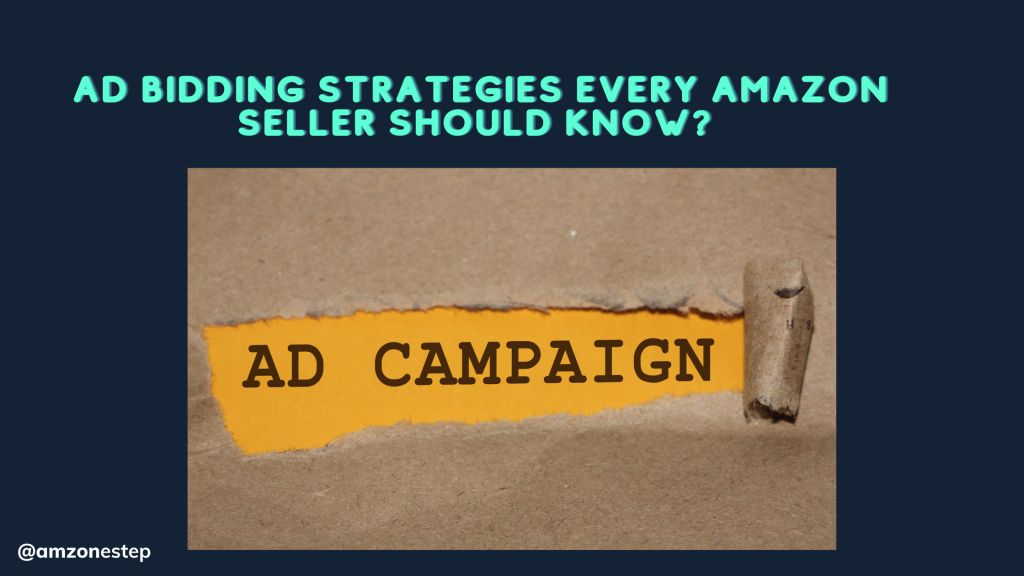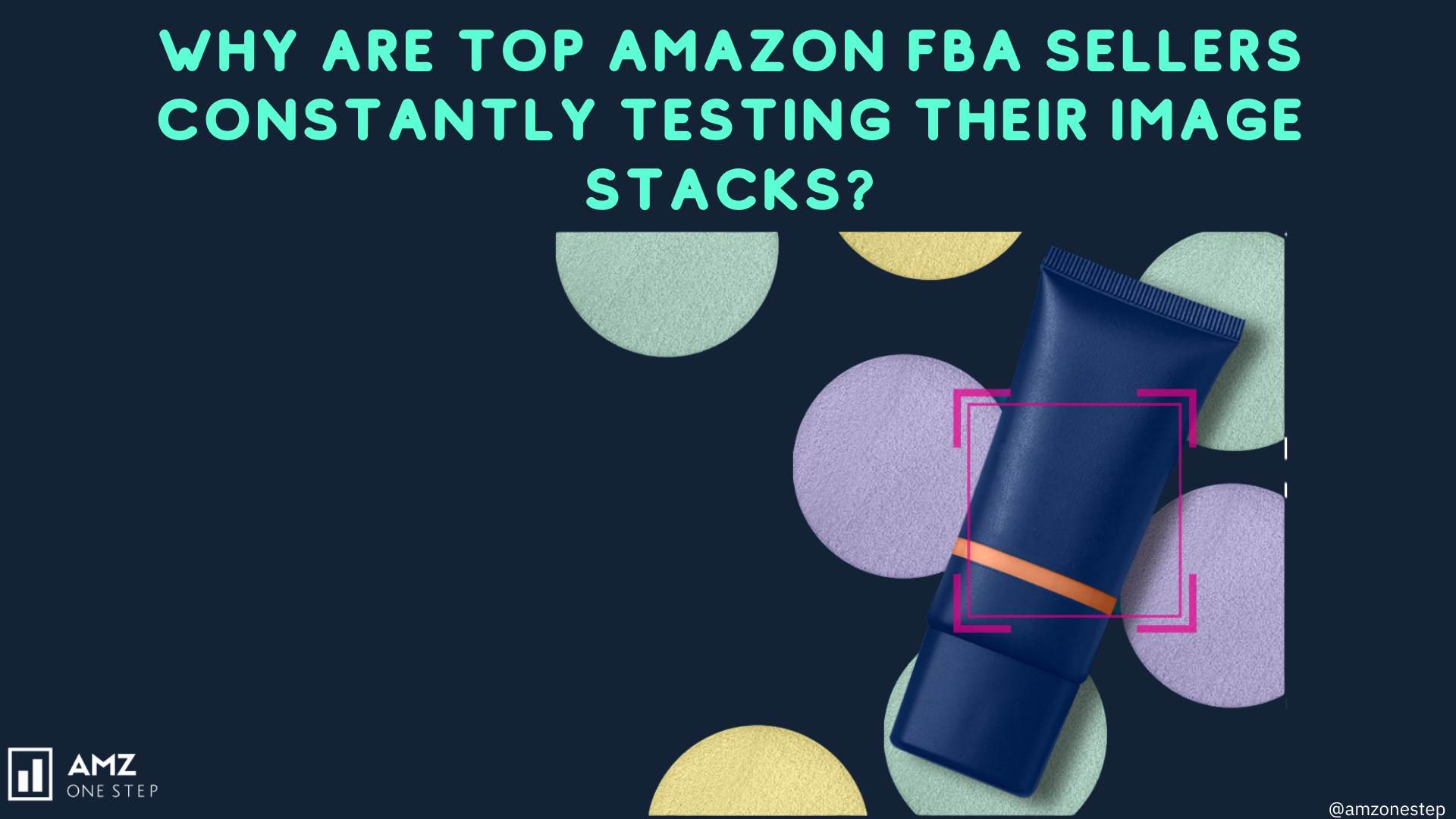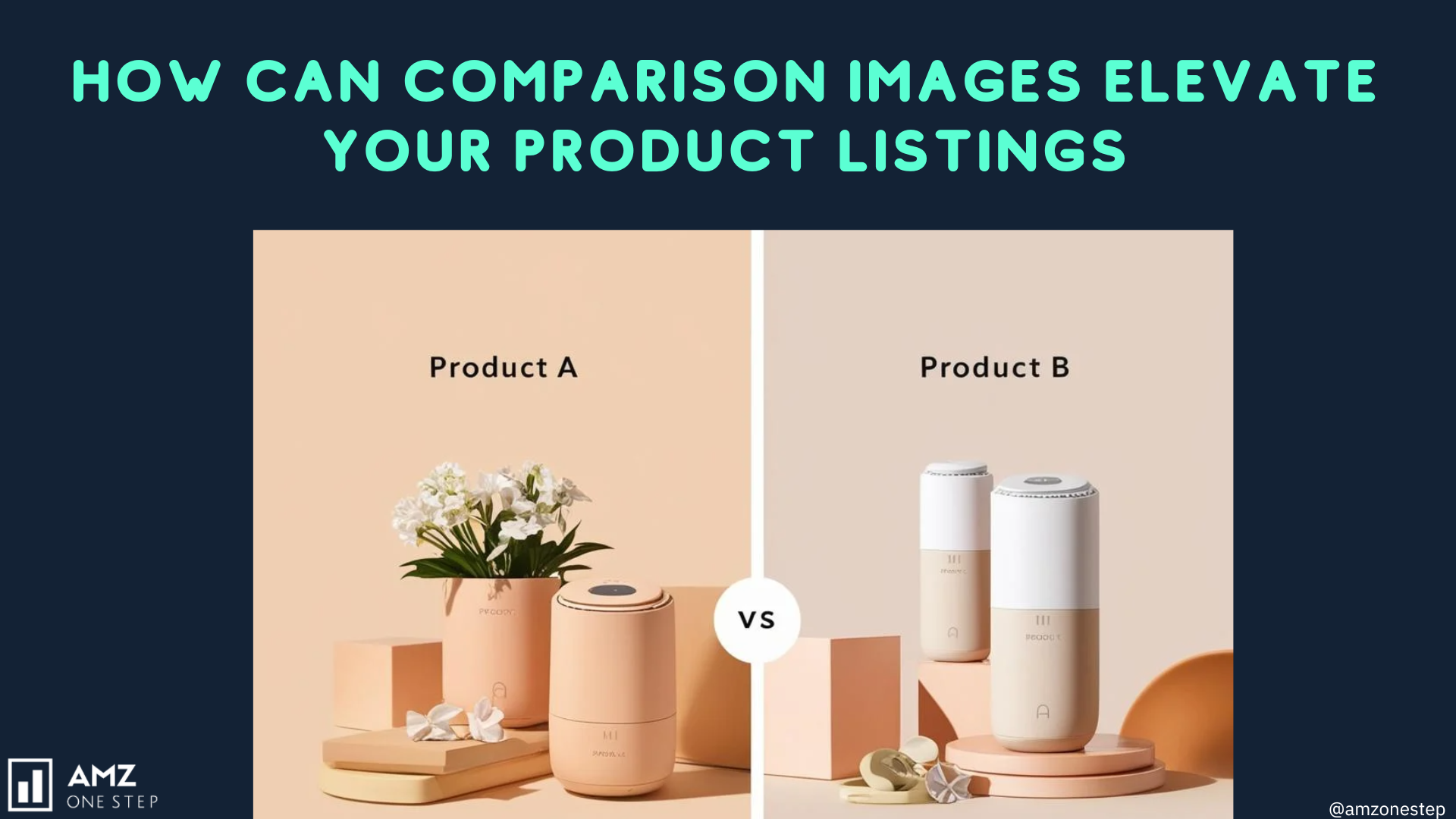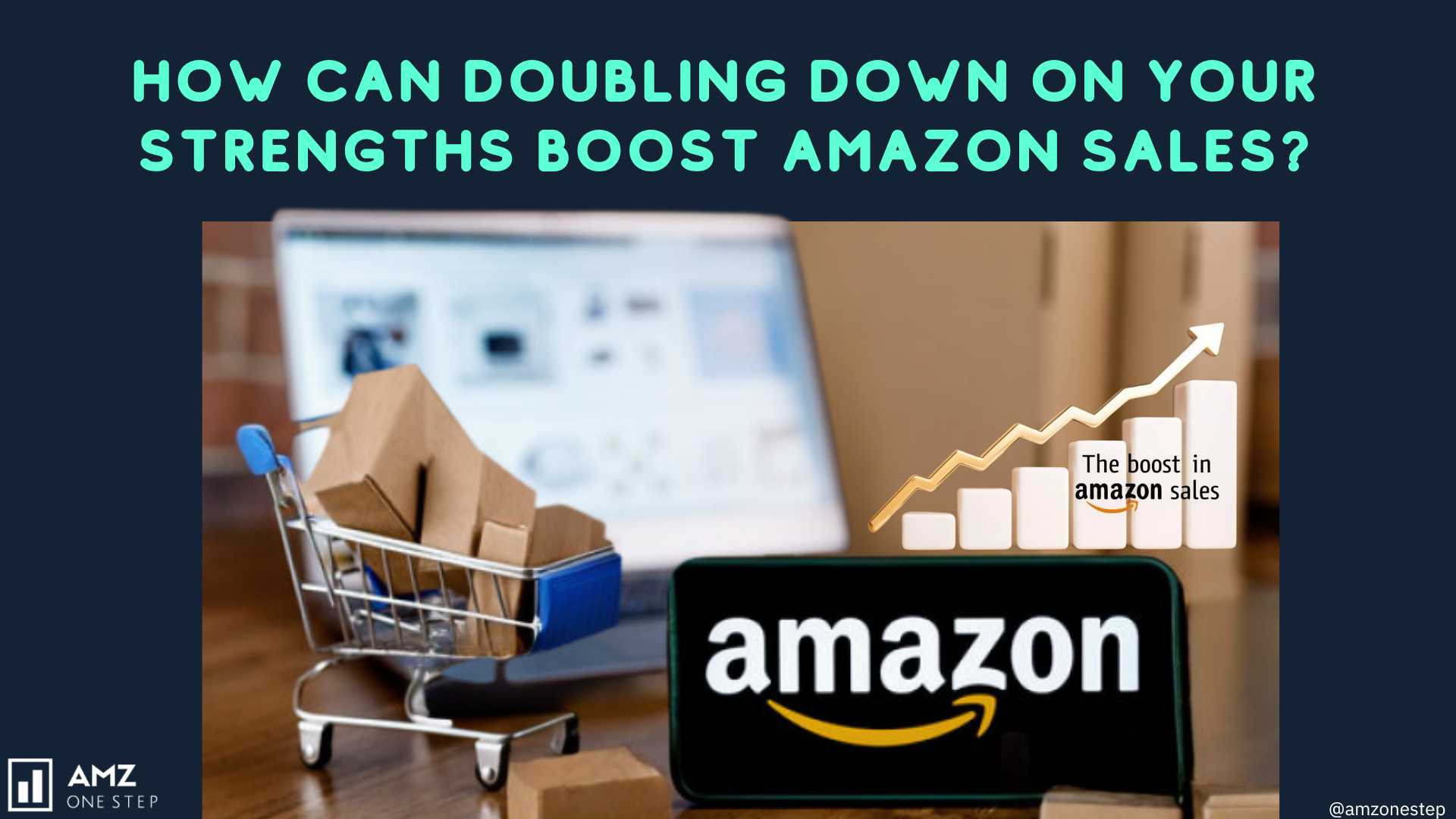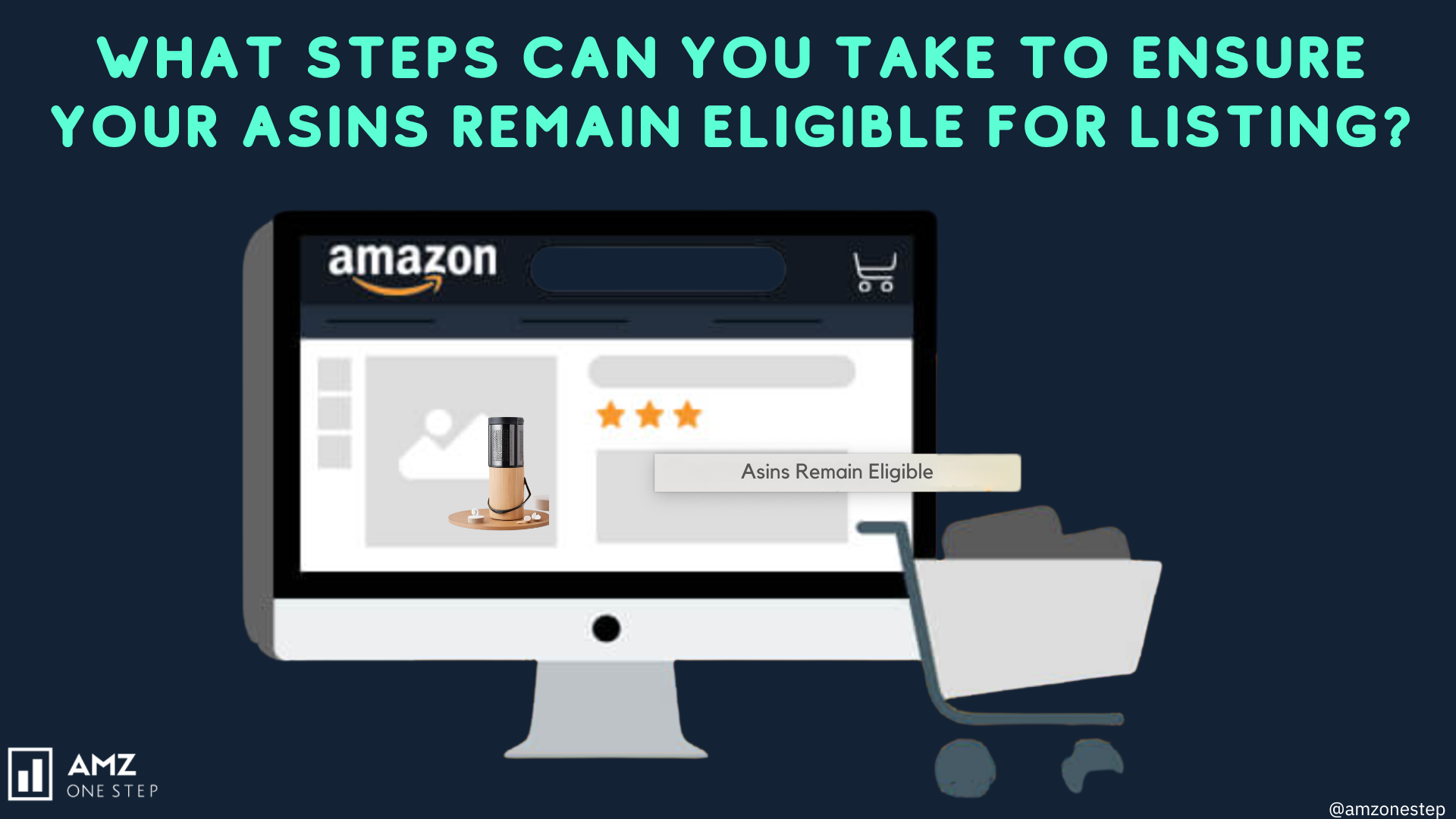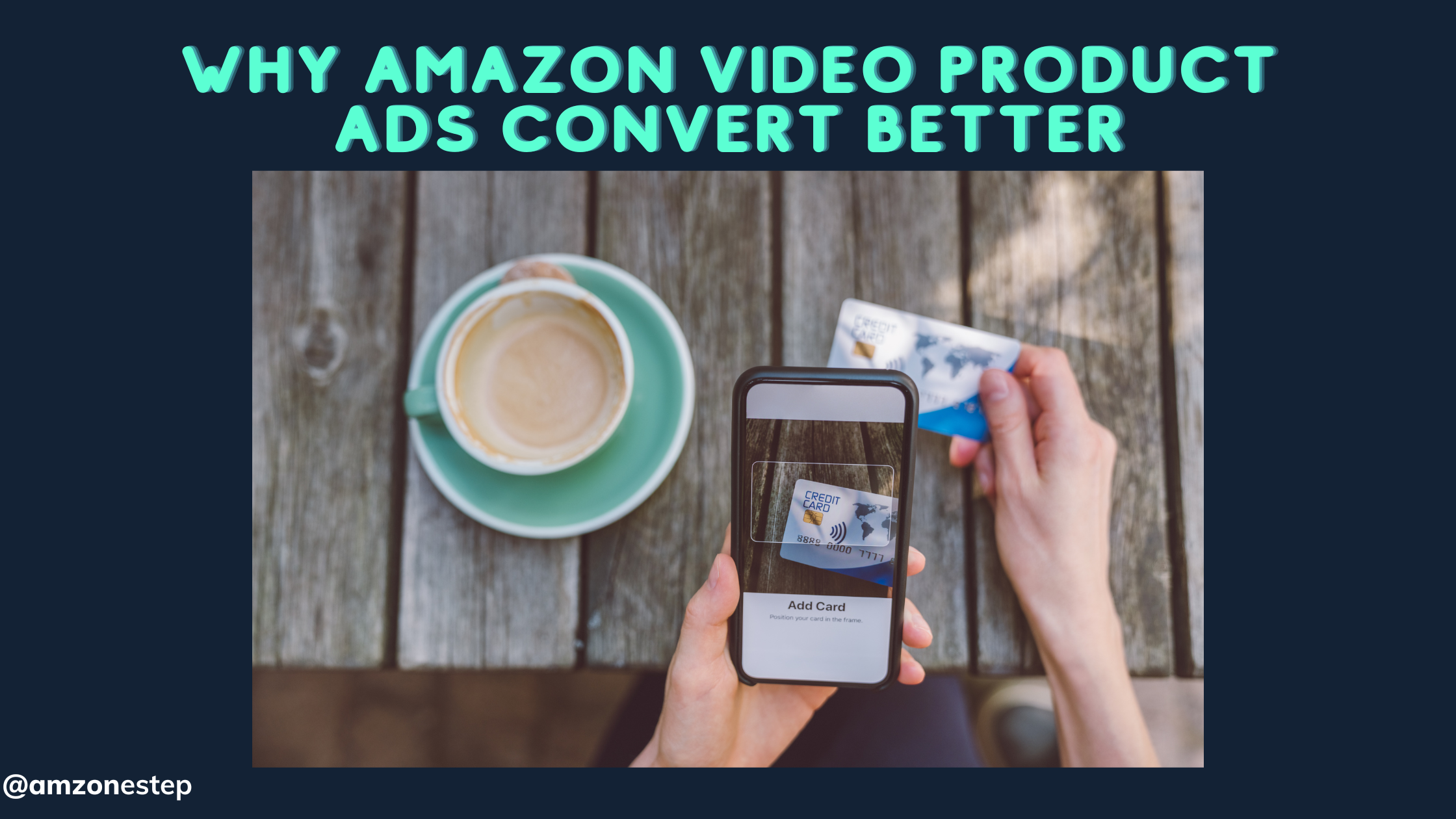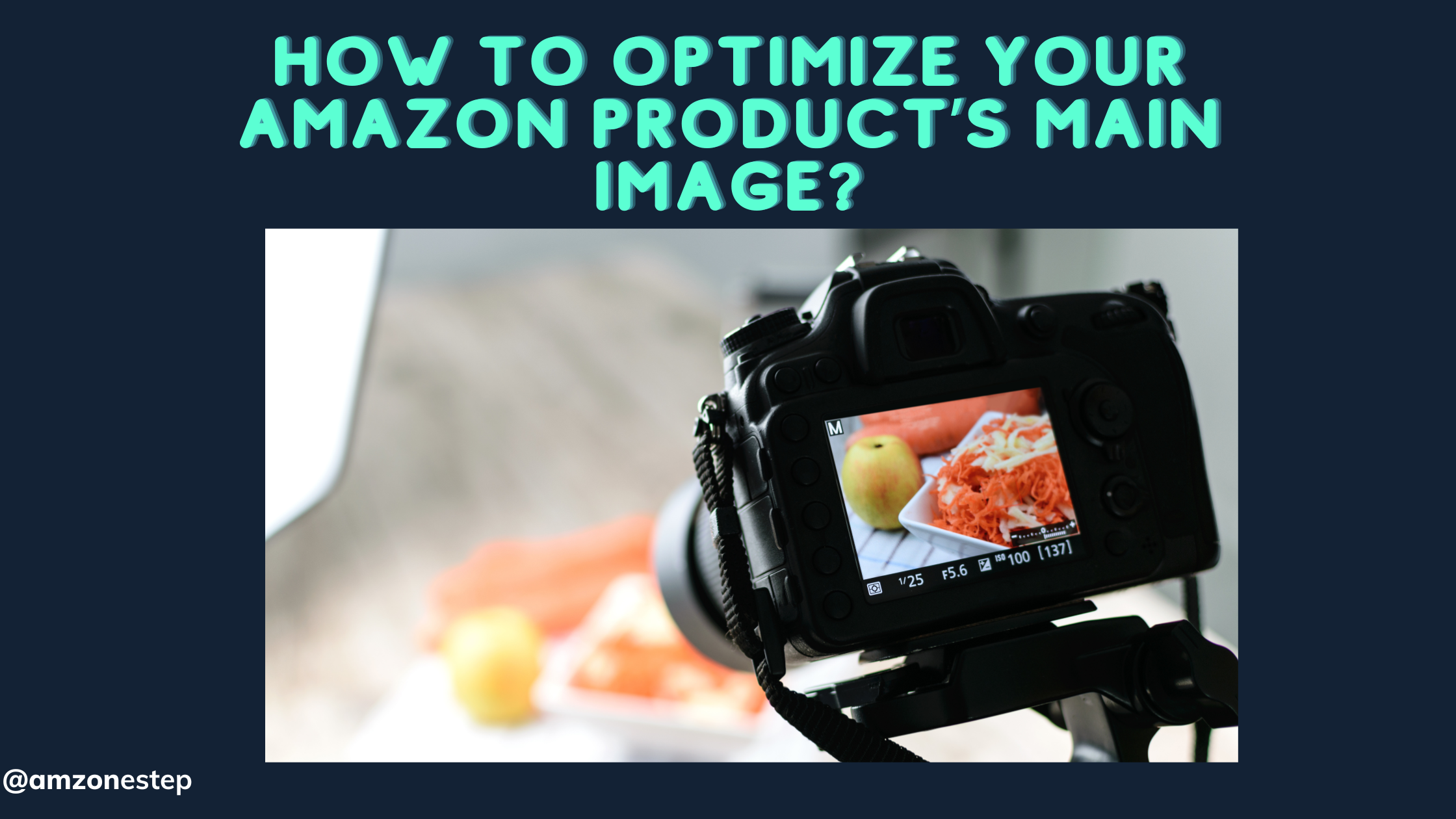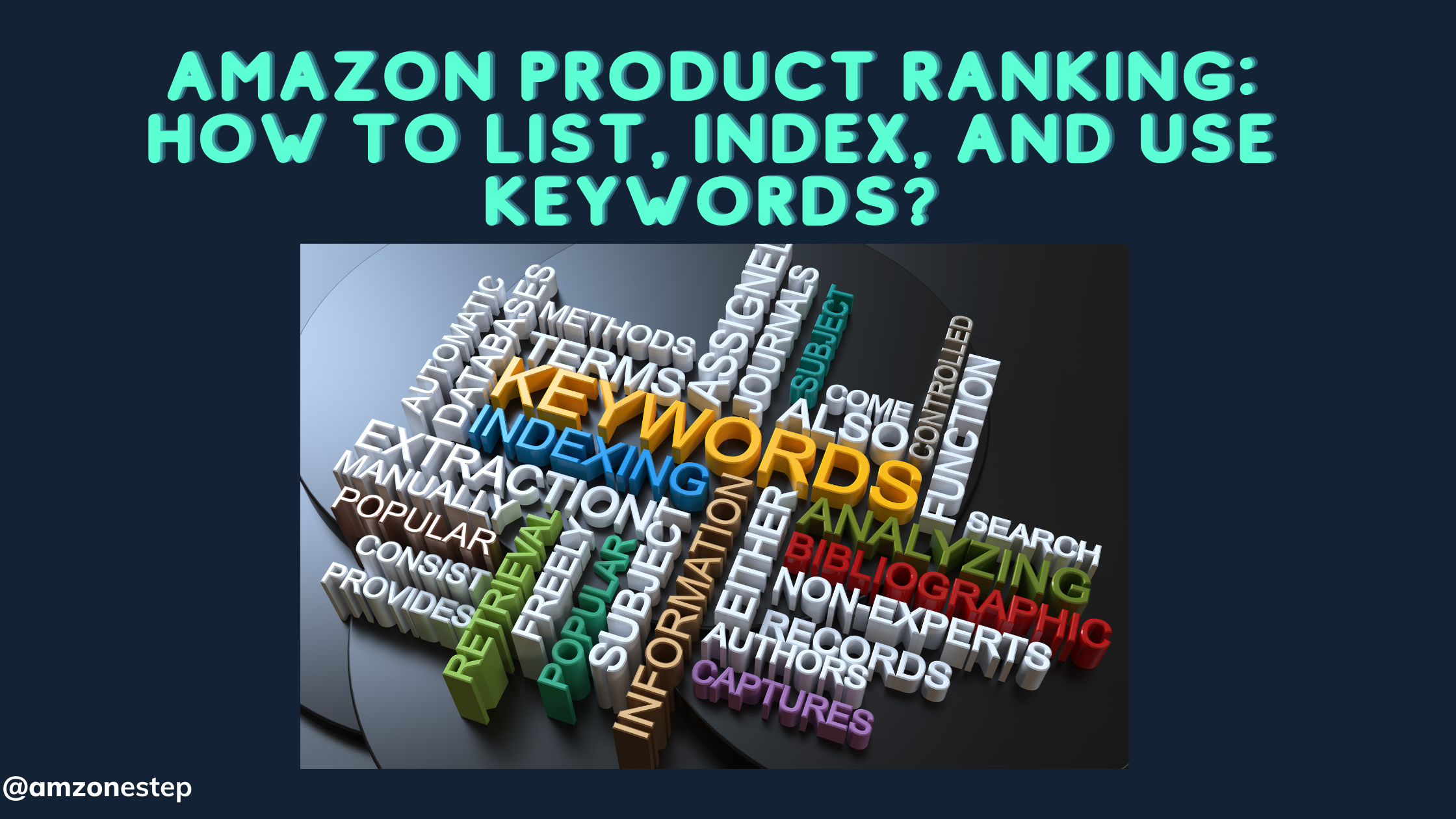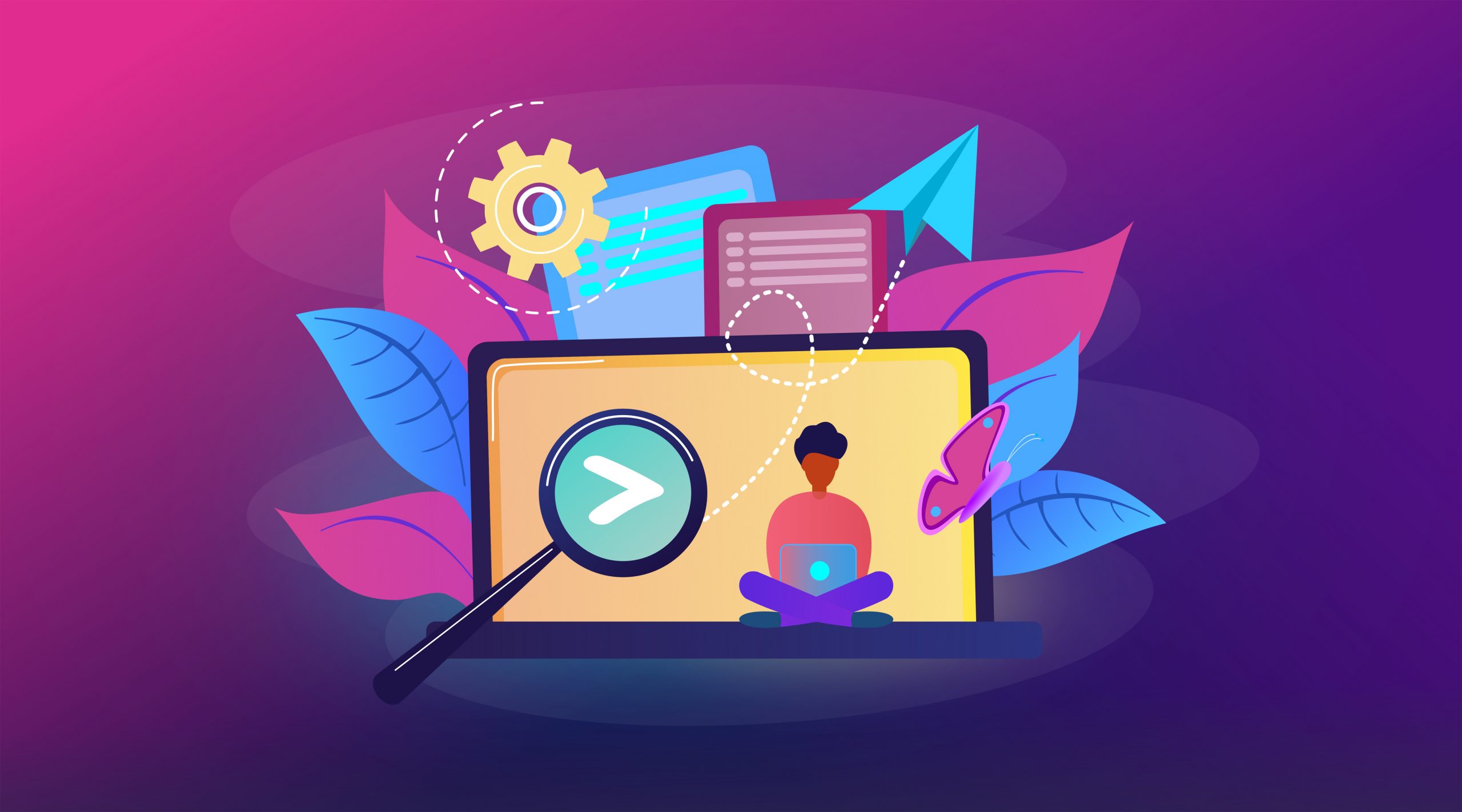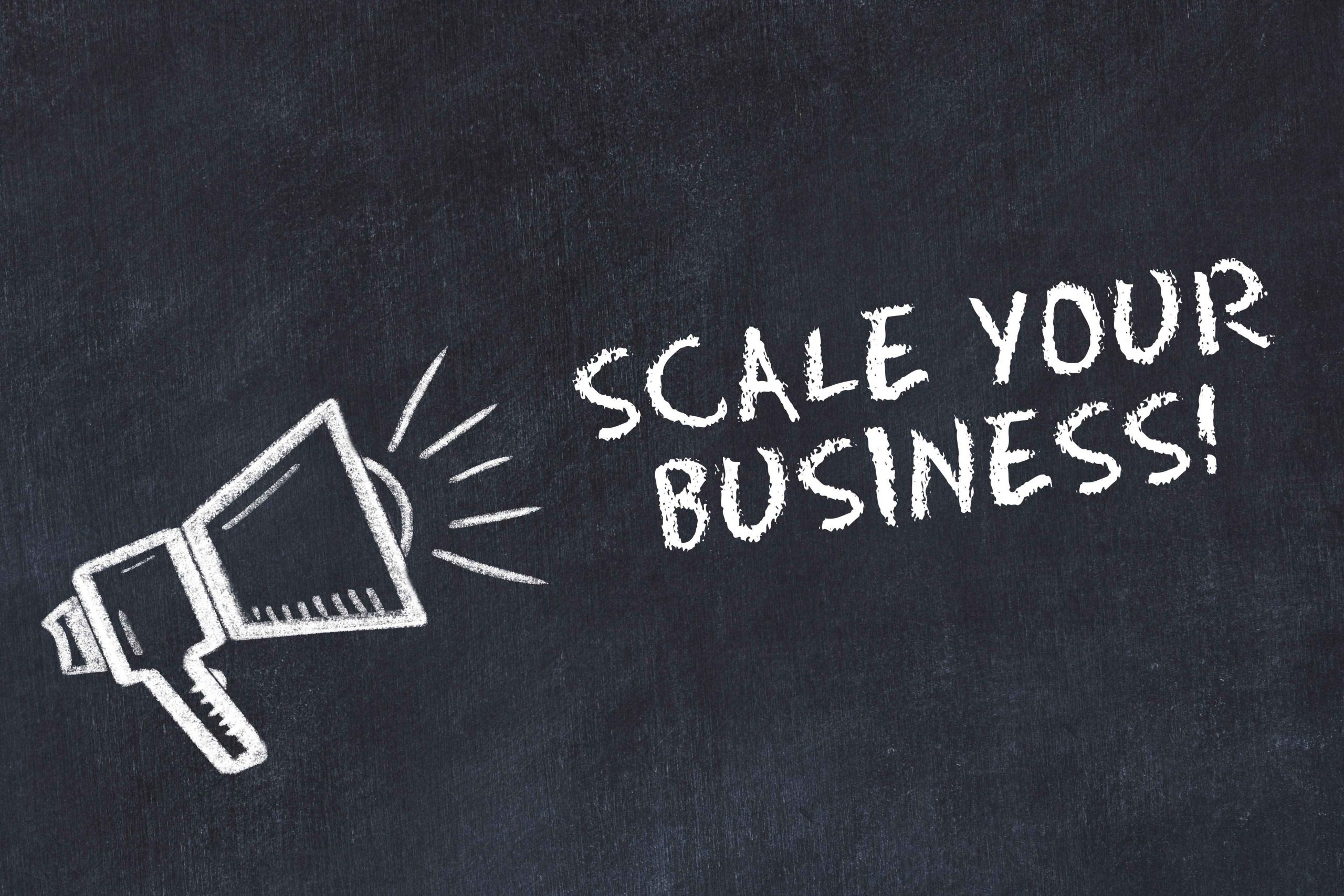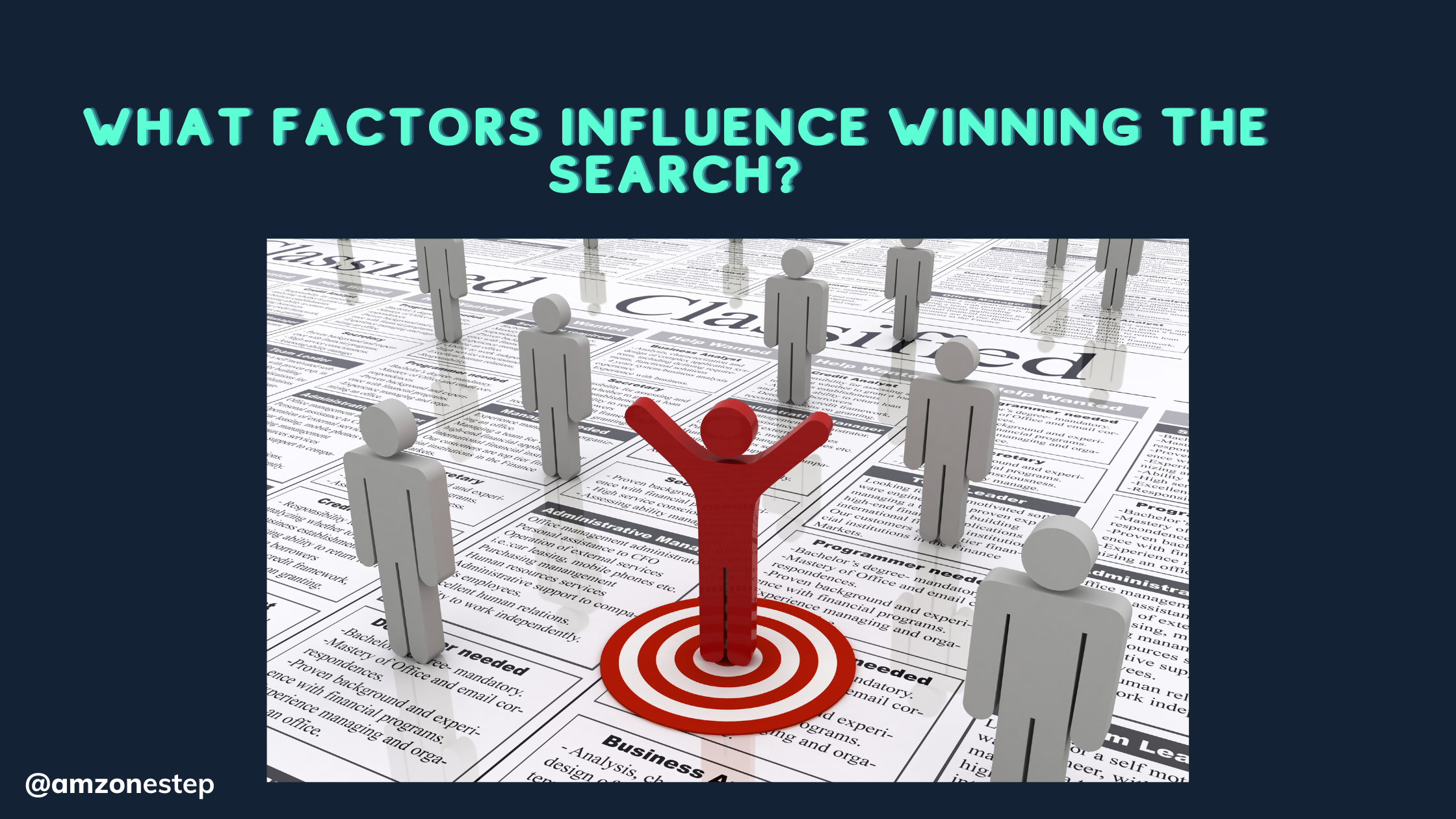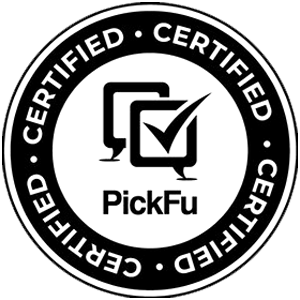We’ll answer that question for you today as we go over the ins and outs of each bidding plan and provide examples of when to use each one. To optimize or scale your Amazon Ads campaign, you change your bids, not your budget. This is a typical misunderstanding in the Amazon Ads world.
What we mean by “bids” is the amount of money you are willing to spend to get someone to click on one of your Amazon ads.
The advertiser sets the bid for each keyword, ASIN, or area they want to target. As a result of who sees your ad and how likely it is that a sale will happen from that person, your bidding strategy affects how, if at all, Amazon’s algorithm changes your price. Difficult stuff, right?
Increasing a Campaign’s budget won’t help you grow. Cutbacks on a Campaign’s budget won’t help you optimize or cut down on useless ad spend either. The only thing that can do that is bids.
Not wasting any more time, let’s take a closer look at each bidding strategy and pick the best one for your projects.
Read More: Mastering Amazon PPC: Strategies for Maximizing Your Advertising ROI
Dynamic Bids – Down Only
You should use this bidding technique if you don’t want to spend too much money on Amazon Ads.
Choosing this bidding approach means you allow Amazon FBA to LOWER your bid right now if the algorithm thinks that a click on your ad is not likely to lead to a sale of the book you are advertising.
Although Dynamic Bids Down Only is a good safety net because it lets Amazon lower your bid for you, the biggest problem I’ve found with it is that Amazon will almost always lower your bid to almost nothing if the book being offered hasn’t sold very many copies in the past.
This happens because there isn’t much proof that your book sells well. This also applies to newly released books: if Amazon doesn’t see proof that your book sells well, they will automatically lower your bid, making it hard to get noticed.
When To Use Dynamic Bids Down Only
With Dynamic Bids Down Only, you can try out Amazon Ads even if your book has been selling well through other channels of marketing or advertising, like Facebook Ads.
The best way to bid is different if you have a brand-new book or a book that doesn’t sell very well. We’ll talk about that soon.
Dynamic Bids Down Only can be a good choice if you want to bring down the bids on an Amazon Ads campaign that has been doing well with one of the other bidding strategies but you’d like to make it a little more profitable.
Read More: What Are Some Current Ways To Boost Sales on Amazon in 2024?
Dynamic Bids – Up and Down
You can let Amazon LOWER your bids when its algorithm thinks a click is less likely to lead to a sale and INCREASE your bids when it thinks a click is more likely to lead to a sale. This is similar to the Dynamic Bids Down Only bidding technique.
Do not forget that Amazon FBA can raise your bids by up to 100% with Dynamic Bids Up and Down. However, it is allowed to raise it that much. A $1,000 bid, for instance, might go up to $2,000, which makes your Amazon ads much more expensive.
If you don’t keep a close eye on performance, this rise in your bids can make Dynamic Bids Up and Down an expensive way to bid that can get out of hand over time.
When To Use Dynamic Bids Up and Down
It’s not something we want to do by hand, and it’s not possible to do it by hand on a per-click basis either! For better results, let Amazon’s system decide when to raise and lower your bid.
If one to two weeks after moving a campaign to Dynamic Bids Up and Down, it stops working well and makes too little money for you, go back to the way things were.
Dynamic Bids Up and Down is a great choice when you want to reach more people with a campaign that is already working well and sell more books.
Fixed Bids
Final Bids are the last bidding tactic. By choosing this choice, you don’t use Amazon’s algorithm at all, unlike the first two bidding strategies.
By doing this, you are stopping Amazon from changing your bids at all. Your price is $0.50 for a keyword. Amazon FBA won’t make it cheaper or more expensive. In the Amazon Ads auction, your whole price is calculated.
While using Dynamic Bids Down Only, a $0.50 bid might change to a $0.23 bid, a $0.48 bid, or even a $0.01 bid. Fixing bids gives you full control over how competitive you are in the Amazon Ads sale.
One word of caution about Fixed Bids, though, before you change all of your campaigns to use this bidding technique. Regular Fixed Bids will usually use up a lot of a campaign’s daily cash.
If Amazon usually only spends a small part of the budget you give it, switching to Fixed Bids could cause your campaign costs to go up by a lot.
Read More: Million Dollar Question: How to optimize PPC Campaigns?
When To Use Fixed Bids
Always use Fixed Bids when you first start an Amazon Ads campaign for a brand-new book. If you want to use Amazon Ads to promote an old book that hasn’t been selling well for a while and has a low bestseller rank (over 50,000), make sure that all of your ads use Fixed Bids.
If you use any of the other bidding tactics, Amazon FBA is likely to keep lowering your bids because they don’t have enough data and proof of sales. This means that your campaigns will take a LONG time to get going.
There’s no doubt that this is an aggressive bidding strategy, so keep a close eye on how your Fixed Bid ads are doing to make sure they’re not spending all of your money and not making any sales.
How Does Amazon PPC Bidding Work?
Sellers only get paid when someone hits on their ad in Sponsored Products, Sponsored Brands, or Sponsored Display. This is called “cost-per-click” pricing.
That seller who wins the ad space on product listings is chosen by a bidding system. Two-Price Auction rules say that the person who bids the most will only have to pay an extra $0.01 over the person who bid the next most.
In an auction, sellers try to win by making a list of related keywords and product targets and then bidding at the level of those targets. People who want to sell something are ready to pay as much as possible for someone to click on a related ad.
The seller may pay less than the amount they said they would, though, so the bid amount isn’t always the same as the amount they were offered. As well as the goal level bid, Amazon FBA looks at a lot of other factors, so the winner of the auction might not have to bid the most to get the first spot.
Many factors are used to choose and rank approved ads, such as relevance, ad rank (which is based on how quickly the product sells), conversion rate, and click-through rate. Many times, this means that sellers with more experience pay less per click in the sale than sellers with less experience.
Read More: How Does The New Seller Guide Affect Amazon FBA Sales In 90 Days?
Mistakes To Be Avoided
If you want to compare results, don’t run “Down Only” and “Up and Down” ads at the same time. They will be competing in the same auction. Don’t compare a new “Down Only” campaign to an old “Up and Down” campaign. The “Down Only” campaign has more data and will probably do better.
For new campaigns, don’t use the “up and down” dynamic bidding approach because the Amazon algorithm can make wrong predictions when there isn’t enough data, which wastes money on ads.
If you want to play around with Amazon’s pay-per-click (PPC) bidding strategies, you need to know about the formulas and data sets that power its bidding optimization decisions. Let’s get into it more. Amazon mainly looks at three sets of statistics to figure out the Chances of Conversion:
- Amazon changes bids based on how shoppers act, such as how likely they are to buy after looking at SERPs, when they’d like to buy, and whether they look at product information pages.
- If you want to buy something in a certain area, Amazon changes the bids based on things like the most popular keywords and the type of people who are most likely to buy.
- Amazon changes your bids based on how well your listed product does in different places, with different keywords, and at the best time for buyers.
Limitations of Amazon Dynamic Bidding
- There are some big problems with Amazon Dynamic Bidding, even though it is very useful. While marketers “feed” the algorithm with information, the system needs a lot of data to work properly, which can mean big upfront advertising costs.
- Companies with small budgets or that want to see quick returns may find this initial investment time hard to handle.
- Despite analyzing hundreds of data points, the algorithm prefers immediate conversions above long-term strategic or brand-building goals. This short-term strategy may not fit firms that promote customer lifetime value over sales or sustained growth.
- The algorithm’s one-size-fits-all approach prevents it from adapting to brands’ specific goals, market positioning, and competitive strategies.
Read More: Increase Amazon Sales with Product Listing Variations: Complete Guide
Strategies for Managing Your Amazon PPC Budget
Driving successful traffic and sales requires smart management of your Amazon PPC budget. These five techniques can help you get the most out of your Amazon advertising budget.
Use Target CPA or Target ROAS, two of Amazon’s automated bidding tactics, and first set a daily budget restriction. This enables bid optimization within your budget via Amazon’s algorithms. Evaluate performance every day, modifying bids and targets accordingly.
Use Automated Bidding and Set Daily Budget Limits
It is important to know what your overall goals and targets are before you set daily spending limits for your Amazon PPC campaigns. From your profit margins and revenue goals, think about how much you are ready to spend each day at most.
A lot of the time, it works well to start with small daily funds and slowly raise them over time. Be very careful to keep an eye on success, and if necessary, change budgets to reflect that. For instance, keep costs down by lowering budgets for ads that aren’t doing as well but are still bringing in enough conversions and sales.
Your Amazon PPC campaigns can run more smoothly and cost less if you use automated bidding techniques. Instead of starting at the keyword level, turn on automatic bidding at the ad group or campaign level next.
Amazon lets you set your budget and campaign goals and then uses tools like dynamic buying to shift bids and costs to match. Before judging success, give automated bidding enough time to get better, which is usually a few weeks. Instead of making big changes to your bids and budgets, make small ones.
The bid optimization process can be improved over time with the help of tools like Amazon’s offer recommendations. We can help you find the best-automated method for your PPC campaigns by testing various automated bid strategies and settings.
Read More: How Attractive Product Packaging Improves Amazon FBA Reviews?
Optimize Keywords and ASINs for Relevance
A key part of managing your Amazon PPC spending well is making sure that your keywords and ASINs are always relevant. Spend some time researching keywords that are highly relevant to your goods before you start setting up your campaigns.
When you use broad-match keywords, your ads will show up for a lot of searches that aren’t relevant, which can quickly empty your budget. Spend some time going through your search term report and finding keywords that don’t bring in any sales.
It’s best to spend your time and money on more useful keywords instead of these. Pick and choose which ASINs you want to sell for each campaign when it comes to ASIN targeting. Make sure that the ASINs you list are very related to the keywords you want to rank for.
Not all of your ASINs should be targeted at once because that would waste your money. Look at your sales statistics and figure out which ASINs sell the most and make you the most money. Send most of your PPC budget to those ASINs that are already doing well.
After some time, you can broaden the ASINs you target, but for now, keep it small. You can see which ASINs are making sales and which aren’t by keeping an eye on your campaign’s related sales reports. Adapt your optimization.
You can get more sales and a better return on your Amazon advertising spend by using your PPC ads to target more relevant keywords and the ASINs that convert the best. Save your money by not spending it on broad keywords and product goals that aren’t relevant and will only get you clicks but not sales.
Relevance is very important in pay-per-click (PPC), so make sure you keep optimizing your account, keywords, and ASINs to keep them relevant. It is possible to get the most out of your PPC budget if these elements are all very important.
Adjust Bids and Manage Traffic Based on Performance
Manage your budget well if you want to have a good Amazon PPC campaign. It means looking at campaign success data frequently, changing bids, and making the most of traffic sources to get the most out of your advertising budget.
Give special attention to your cost per click (CPC), click-through rate (CTR), and conversion rate when you look at your marketing metrics. Lowering click-through rates or conversion rates over time could mean you need to change your targeting or offering information to make it more relevant.
Additionally, you can lower bids on keywords that aren’t selling well and raise bids on keywords that are. To find the best CPC, conduct A/B tests with various bid amounts. Utilize Amazon’s automatic targeting choices to have your ads show up for relevant search queries without having to add keywords by hand.
Enable targeting automatically at the level of the campaign or ad group. Watch out for search terms that bring in visitors and sales and stay away from those that don’t. Eventually, you might need to add negative keywords to keep from spending too much on queries that aren’t important.
Look at ad group, keyword, campaign, and product performance statistics. Locate areas that aren’t working well and are affecting your results. You might want to pause or get rid of these areas to make your marketing more effective.
Furthermore, you can make distinct ad groups for branding keywords, product name keywords, and other types of keywords to better control bids based on performance.
- Amazon FBA offers strong automation tools, such as dynamic bidding, which sets the best bids for you based on your desired outcomes. Utilize these to eliminate the need for manual work in bid management. Periodically check to see if your aims are still in line with your goals.
- Examine your search term and location reports often. Finding out which keywords and places get the most conversions can help you decide how to spend your money. You may find new keywords and ad placements that are useful and worth spending more money on.
- External factors that affect success over time, such as holidays, sales, seasonality, and new product releases, should not be forgotten. During times of high demand, you may need to raise bids and lower them when demand drops. Watch data closely and stay flexible so you can act quickly.
- Your Amazon PPC ROI can be maximized by using the above tactics to regularly analyze and improve your campaigns. Budgeting, bidding, and tracking traffic sources correctly takes time, but it pays off in huge amounts over time through better results and more efficient spending.
Structure Campaigns and Leverage Automation
To get the most out of your Amazon PPC budget, you need to structure your campaigns strategically and automate them. Here are some ideas:
- Set up ad groups with similar products, categories, or keywords to narrow down your campaigns. You can then make ads that are more appropriate and keep a close eye on performance and spending at the ad group level.
- Make campaigns for both branded and non-branded terms so that you can use your budget in the best way for each chance.
- Use Amazon’s automatic targeting tools, such as product targeting and automatic targeting, to reach more people quickly. Let Amazon FBA show your ads for search terms that are useful but that you might not be seeing.
- Don’t waste money on traffic that isn’t relevant by using bad keywords a lot. To your negative keyword list, add any search terms that bring up your ads but don’t convert. Check your search term reports often to find new negative keyword possibilities.
- You can control match spread by giving your keywords certain match types. Use exact match and phrase match to get more appropriate traffic, and use broad match to find new sites. Make price changes at the campaign or ad group level as needed based on how well the match type is doing.
- Automate bids at the ad group level based on facts about how the ads are doing right now. Use Amazon’s bid strategies to get the most clicks, conversions, or your goal CPA. This takes the emotion out of managing bids. Review your bid tactics often.
- Set your ads to only run during the times or seasons when you’re selling the most. Budget management can also be helped by pausing ad groups that aren’t doing well.
- You can use Amazon’s campaign budget optimization to move money automatically to efforts that are doing better. Let Amazon automatically split your cash between campaigns based on what’s best for you.
- Review search terms and ASIN targeting results regularly to find low-value placements and add more negatives or improve targeting. Getting the most out of your investment means cutting down on waste.
Master Amazon’s manual bidding strategy to gain full control over your ad spend. Customize your bids for high-performing keywords and outsmart your competition with strategic adjustments.
Take control of your Amazon ads today with AMZ One Step

Hi there! I’m the content marketing and branding specialist for AMZ One Step. I work hard to create engaging and informative content that helps our readers learn more about Amazon selling and how to make the most of their businesses. I love spending time with my family and exploring literary works when I’m not writing or working on projects.

